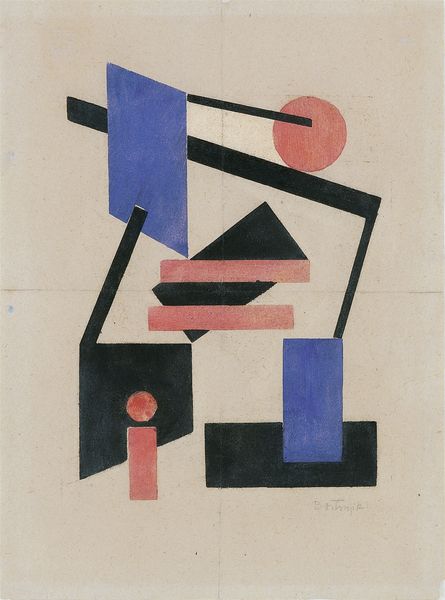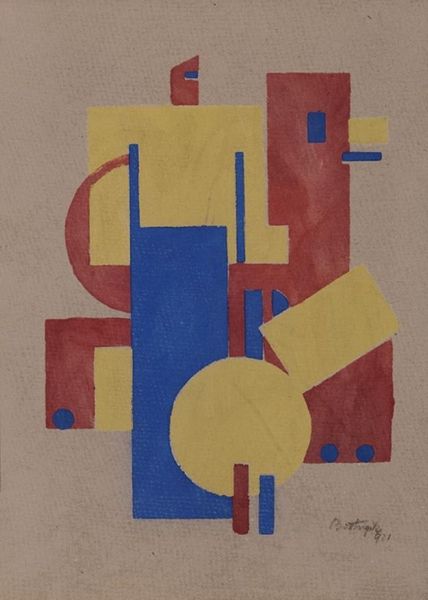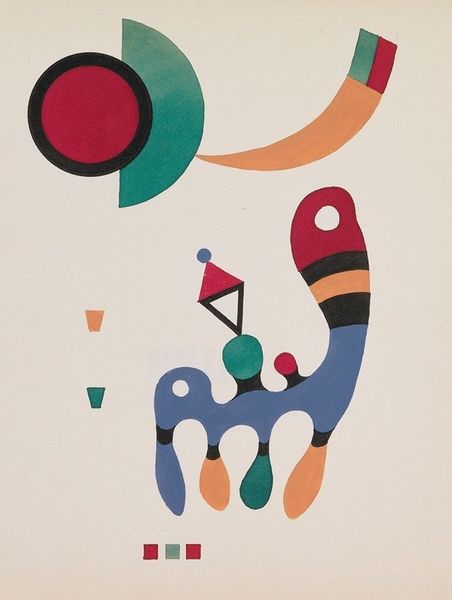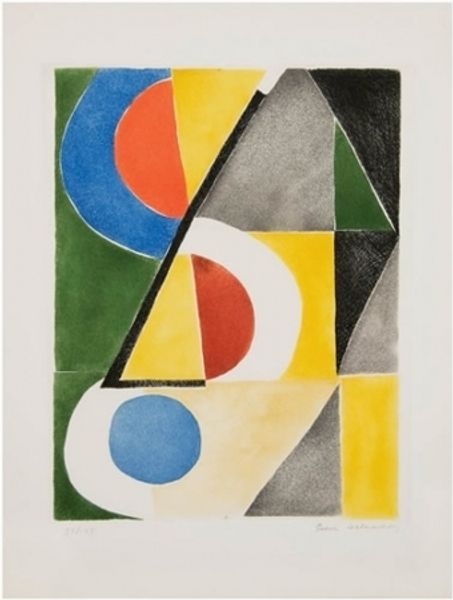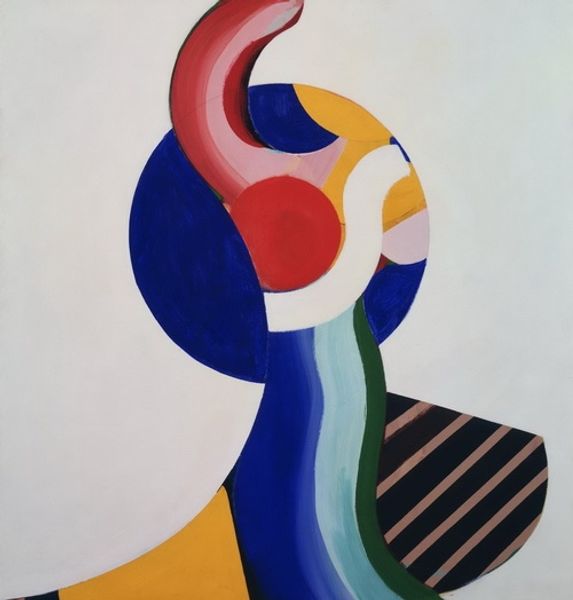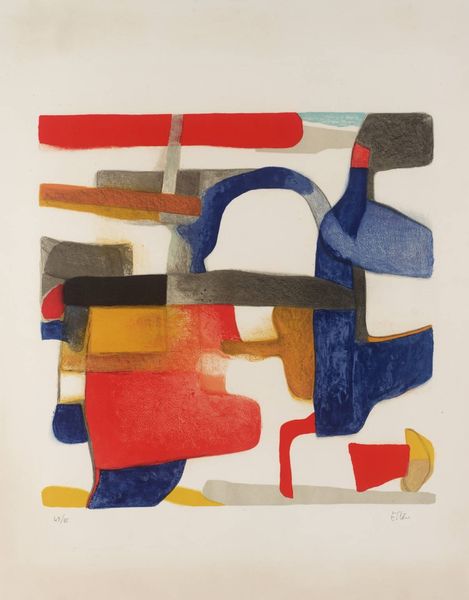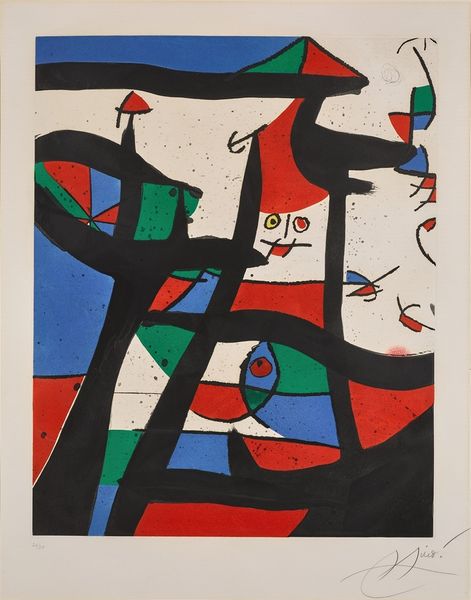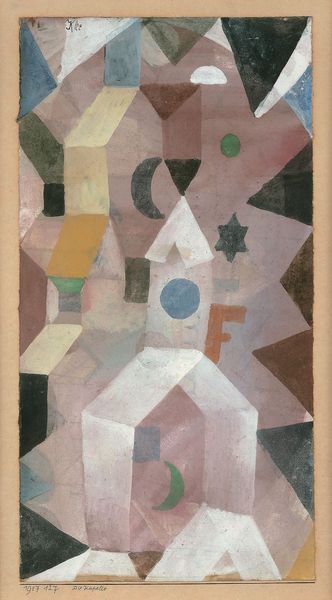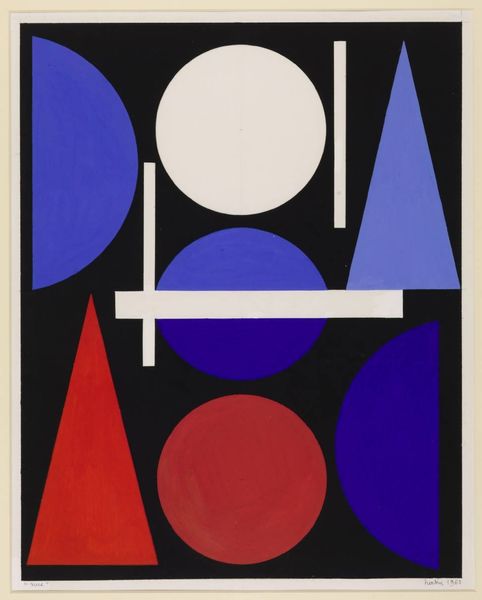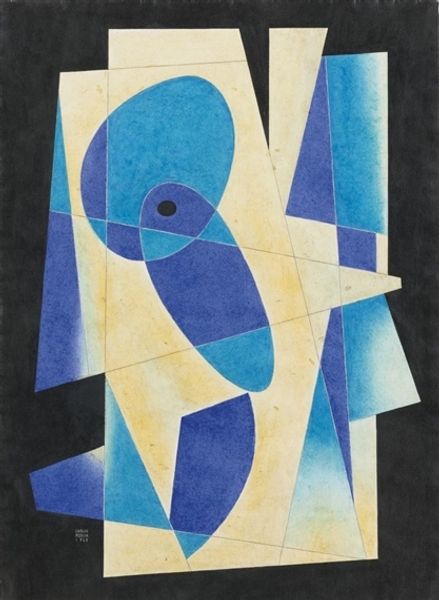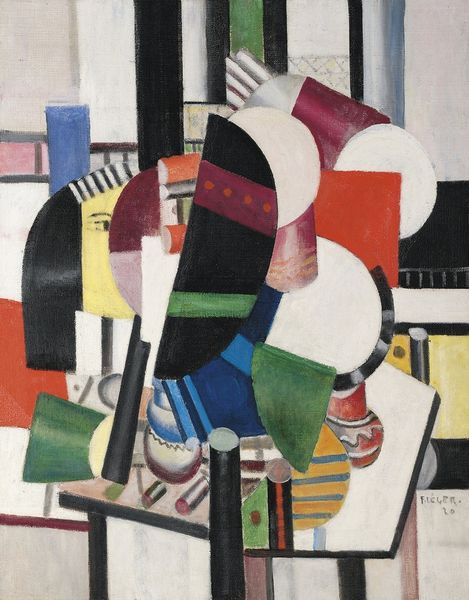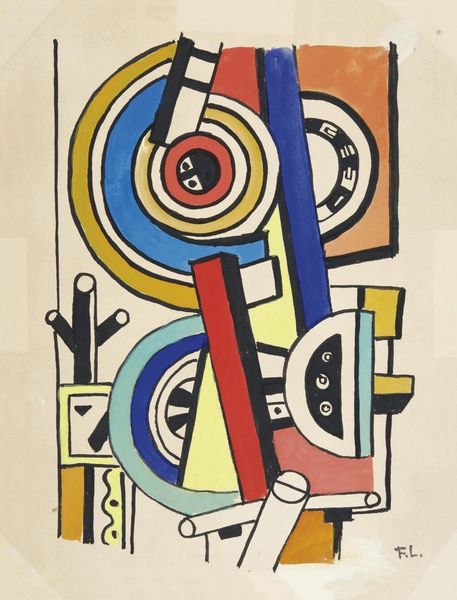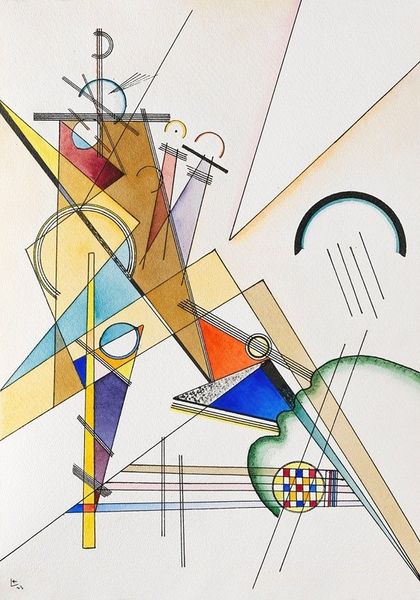
painting, acrylic-paint
#
cubism
#
painting
#
acrylic-paint
#
form
#
geometric-abstraction
#
abstraction
#
line
Copyright: Public domain US
Curator: Here we have Auguste Herbin's "Composition Cubiste," an acrylic painting from 1917. What's your initial reaction? Editor: My eye is immediately drawn to the vibrant, almost playful, arrangement of geometric forms. It's striking, but also a bit puzzling—like trying to decipher a colorful code. Curator: Interesting you say that. For me, it's an intriguing dance between form and feeling. Herbin, as an iconographer, uses these shapes not just as aesthetic elements but as potent symbols. Circles, squares, triangles – they carry historical and psychological weight. Editor: Absolutely, and understanding that historical context is key. Remember, this was created during World War I. The fracturing of forms—the cubist approach—resonates with the fractured realities of the time. Was this a common sentiment in this style of painting? Curator: Indeed. Geometric abstraction served to disrupt pre-war conventional order and aesthetics, allowing artists to grapple with the period's turbulence and find order amid chaos. This quest is mirrored in the precise lines and solid planes. Editor: Yes, the artwork reflects the politics of its time, offering a form of visual commentary on the societal disruptions and anxieties. It uses those shapes as visual symbols of the state of things. The sharp angles convey a sense of unease or conflict, perhaps unintentionally? Curator: Perhaps. But also, to view it as a form of rebuilding from destruction. Think about the conscious arrangements after major upheavals. Herbin uses color relationships to provide continuity through dynamic change, almost as if to give direction to cultural memory. Editor: I’m not sure I completely buy into that interpretation. Is this just an appealing composition, and we read into it a symbolic meaning later? Curator: Both can coexist. The symbols speak to continuity and order amidst flux, while also working to challenge norms by reflecting that era's tumultuous energies. That tension enhances its cultural effect. Editor: A compelling point. I now see it as an intriguing relic reflecting that intersection of historical and social context—visual representation of the shifting society from that period. Curator: In the end, it provides visual signs about our cultural timeline in unique patterns. Editor: Precisely—and invites conversations regarding both symbolic weight and our society's narrative.
Comments
No comments
Be the first to comment and join the conversation on the ultimate creative platform.
